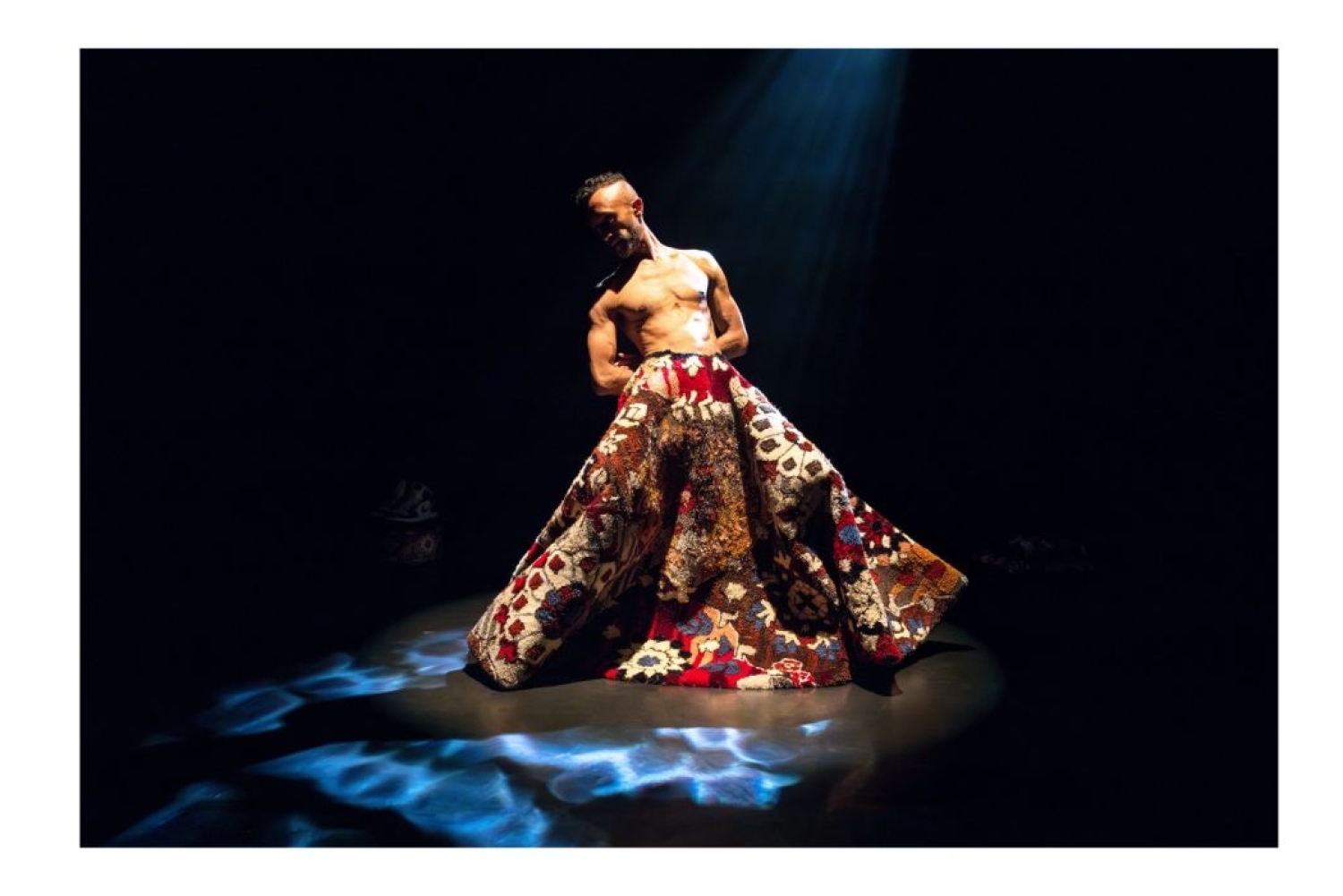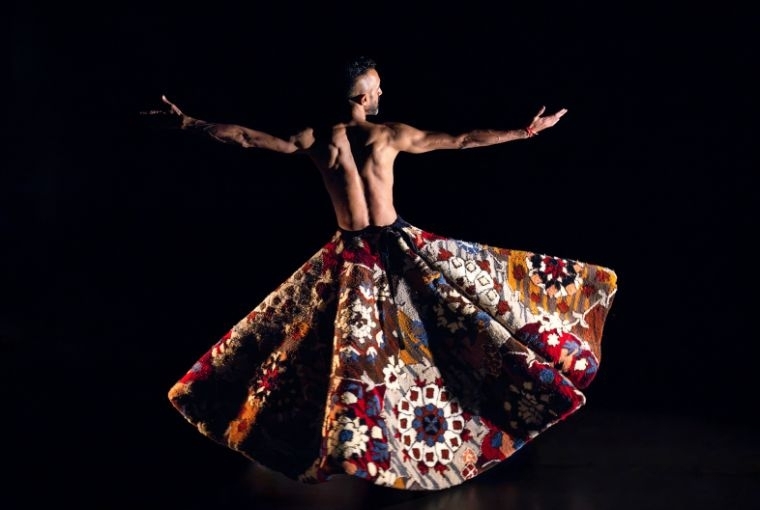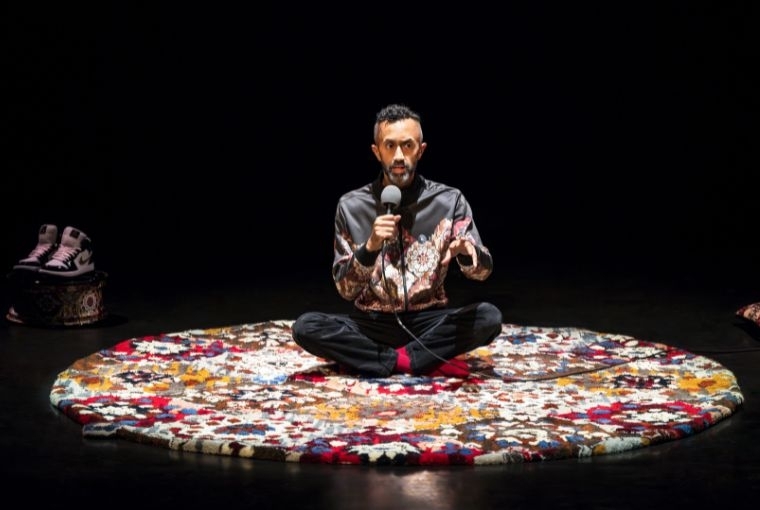
Mathroo Basha performance at the Barbican, London. Photography Foteini Christofilopoulou

Mathroo Basha performance at the Barbican, London. Photography Foteini Christofilopoulou
Hetain Patel is an artist who resonates with the idea of playground and of play, he’s an artist who brings together a wide range of disciplines in his practice. A London-based artist, Hetain moves seamlessly between the disciplines of film, dance, paintings, music. In an extraordinary 20-plus year career, our hope is to dive into Hetain’s world a little bit, and for us collectively to think through his practice as a way of also thinking through this idea of the interdisciplinary, which is so central to Platform’s mission itself.
Mortimer Chatterjee: Come As You Really Are (produced by Artangel), a collection of over 20,000 objects which the artist has curated from hobbyists all over the UK is still on exhibit. Hetain, I would love for you to just maybe talk us through some of the ideas of play and maybe freedom through play.
Hetain Patel: It’s about self-expression and the longer I’m an artist, every year that goes by I want to make sure that I’m constantly in touch with being able to honestly express myself and not get bogged down in industry things or repetition or expectations. Hobbyists have real access to that self-expression because they don’t do it for money or because they have to. They do it because they’re compelled or obsessed, and that’s what we want to be doing as artists. Everything they do feels so vulnerable. There’s no layer of pretence. The idea of curating thousands of objects made, crafted and collected by people just for the sake of it creates a real energy in the room.
MC: We, Tara and I, were lucky enough to see it in Croydon, an area of London you don’t ordinarily associate with fine arts. This goes to the heart of a lot of your practice, which is about moving art outside the silhouetted institutions or commercial galleries into spaces that otherwise may not be activated by art.
HP: Exactly. I grew up being very intimidated and scared of art galleries and theatres. I never went to any. It’s important that people who encounter my work feel they can access it and not feel intimidated. So, this exhibition took over a former English pub in a shopping mall and transformed it into an Aladdin’s cave. People who were just shopping stumbled into it without realising and were suddenly amazed.

Mathroo Basha performance at the Barbican, London. Photography Foteini Christofilopoulou
MC: Your film work equally deals with ideas of popular culture, moving beyond ‘video art’ and its theoretics, bringing it to a wider world. Your videos online have been viewed some 50 million times, so you’ve found ways to engage large audiences.
HP: I’ve always been drawn to physicality, growing up imitating Bruce Lee and Michael Jackson. My birthday is the same day as Bruce Lee, so I’m allowed to do it. Like when you’re growing up, you try things on for size physically. I was always drawn to dance and to sign language through my deaf friends. Bodily physical communication fascinates me. In cinema, I love visual storytelling. I’m a big commercial film fan; The Matrix, Dune. I’m interested in weaving marginal identities, whether race, gender, or disability, into big cinematic languages we all understand; epic music, choreography, fashion, visuals - these help draw audiences into worlds that are both familiar and unfamiliar.
MC: A film like Don’t Look at the Finger (2017) already feels ahead of its time in using black actors as cinematic protagonists. Black Panther, which came after, showed Hollywood catching up with these ideas of marginality.
HP: Black Panther was important, it had been in the works for years but wasn’t allowed because studios thought big films with black actors wouldn’t make money. When it smashed box office records, things changed. When I made Don’t Look at the Finger, I was creating films I wanted to see. As artists, we respond to what exists and add what’s missing.
MC: These shorter films, around 15 minutes long, do you see them leading to feature-length work?
HP: Absolutely. These films are my way of putting myself through film school, I never went to one. It lets me learn collaboration, scale, and imagination. The themes in these films are forming what will become my first feature.
MC: A video we first encountered from your practice was Kanku Raga (2007).
HP: At the time, the UK was full of football billboards of Wayne Rooney bare-chested with the red St. George’s cross across his body, his chest. For a brown person in the UK, that flag was terrifying. At the time, I was a tabla student as well, learning about cyclical rhythms, verbal bols and using materials from prayer ceremonies that I’d grown up with, I guess. The video wrestles with my relationship to Englishness and that symbolism, marking and wiping the flag on and off my body, showing that uneasy relationship.

Mathroo Basha performance at the Barbican, London. Photography Foteini Christofilopoulou
MC: In 2025, with flag-waving nationalism resurging, what does one feel?
HP: Terrified. I saw the marches myself, 110,000 people waving the St. George’s flag. But it’s also important to remember there’s hope. These things keep coming back, but we can do something about it. As artists and creatives, our way of taking action is through making.
MC: Another work, To Dance Like Your Dad (2009), explores family and diaspora.
HP: I wanted to spend time with my dad. He was always at work, so I went to his factory and filmed him giving me a tour, thinking I’d edit it for his business. I ended up making it into an artwork instead and invited him to the exhibition without telling him. He watched it, it was very emotional, quite frankly, it changed our relationship. That’s what I want my art to do, make my life better. My dad’s a working-class man; we don’t sit around discussing identity or ancestry. But through art, I found a way to connect. Understanding can happen without words.
Words Mortimer Chatterjee
Date 26-11-2025